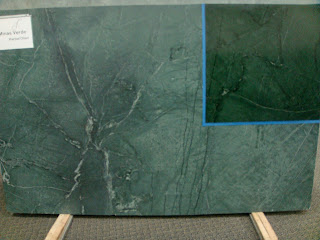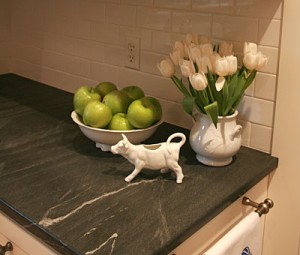Take a look into Food Network - All Star Chef - Paula Deen's Kitchen. Stunning!!!

Welcome to My Kitchen
By Gwyn Duggan From Cooking with Paula Deen, November/December 2005
When Paula and Michael built their new home, one of the main priorities was the kitchen. She wanted the kitchen to reflect her Southern heritage and have the feel of an old house. Paula wanted a serious, professional kitchen that didn't feel like one. This contradiction was accomplished using a modern floor plan but incorporating historical elements. The exposed ceiling beams and brick backsplash helped achieve an older feel. Rather than using granite for her countertops, which Paula felt was too modern, the countertops were made from soapstone. Other touches were decidedly modern giving Paula her dream kitchen that could comfortably accommodate family and friends.
After spending so much time in commercial kitchens throughout her restaurant career, Paula had grown accustomed to the amenities of professional kitchens. When she had the opportunity to tailor her own kitchen, one of the first things she required was a deep fat fryer. She had become spoiled with the ease of frying in her restaurants so she had a commercial deep fryer built right into her island. Paula finds that it makes frequent frying “a pleasure, not a chore.”Paula also loved the convection ovens used in her restaurants. Her commercial double oven is extra large and cooks using fans to move heated air over and around the food. This ensures even baking. The oven can be a little tricky to use, since convection ovens require lower temperatures and lower bake times, but Paula loves the end results.
The family tends to congregate in the kitchen, but Paula didn't want that to impede her cooking. To keep refrigerated items easily accessible, Paula had refrigerator and freezer drawers put on the outside of her island. This way, the hungry people that gather in her kitchen can get a snack and still be out of her way while she's cooking.
To achieve warmth and comfort in her new kitchen, Paula wanted a cooking fireplace. She loves that she can cook in it, but feels the fireplace is just as important because of the welcoming atmosphere it provides. Paula loves that she can have a fire crackling in the kitchen to add a glow during the winter months.
There will be a great deal of cooking and eating going on in such an inviting kitchen and that means only one thing: dirty dishes. Paula's main sink is 48-inches with two faucets to accommodate the mess she and her family make. The sink is the size of a small bathtub and is really convenient because two people can comfortably wash dishes at the same time.Another interesting aspect of Paula's kitchen is her appliance hutch. Paula wanted her appliances to be at countertop level but also wanted to be able to close them off from view to maintain the older look of the room. This was achieved by building an “appliance hutch.” The hutch has electrical outlets that make it practical but it looks like a piece of antique furniture when closed.
To finish her kitchen, Paula displayed her hanging copper pots and pans above the cook top. She's admitted they are mostly there for their classic look. The cast iron pan, however, is well used because, as Paula says, “Every kitchen needs one or two pieces of good old cast iron!”
Paula's kitchen maintains a homey feel despite its hugeness—the island alone is a hefty 11'x4'—because of the traditional aesthetic pieces. The overall effect is one of comfort and convenience that welcomes cooks and company alike.
http://www.pauladeenmagazine.com/articles.php?id=20
Plus check out Paula Deen's Kitchen on Rachel Ray's "I Want Paula Deen's Kitchen" makeover!
http://www.rachaelrayshow.com/show/segments/view/i-want-paula-deens-kitchen/











































